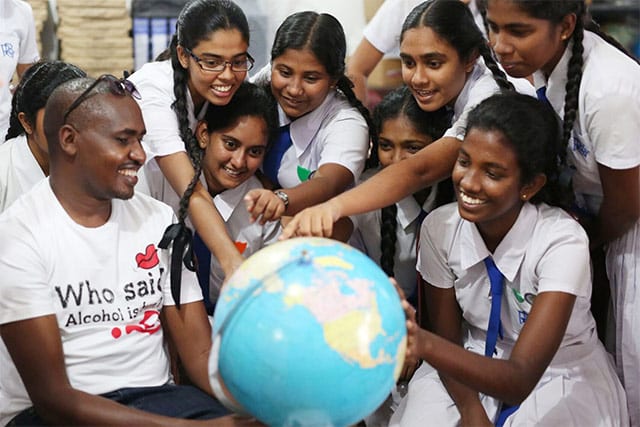This guest expert opinion is written by Danica Keric and Julia Stafford from the Cancer Council Western Australia’s Alcohol Programs Team. An earlier version of this article was originally published on Croakey on July 30, 2020.
If we want people to stay at home, if we want them in a good state of mental health with a conviviality that encourages them to adhere to social isolation, we’ve got to ensure they have access to the social norms such as enjoying a drink.”
Retail Drinks Australia
With a comment like this from the alcohol industry, are we really surprised that some Australians have reported consuming more alcohol during the pandemic and that 29% of males and 42% of females cite stress as a reason for consuming more alcohol?
Our recent commentary piece published in the journal Drug and Alcohol Review suggests this shouldn’t come as a surprise, as there was a deliberate move by the alcohol industry to frame alcohol as an essential product, including for our mental health, during the pandemic.
Reducing Alcohol Availability and Harms
In March, back at the beginning of Australia’s response to the COVID-19 pandemic, Western Australia (WA) was the only Australian jurisdiction to introduce restrictions on the purchase of packaged liquor.
There was a deliberate move by the alcohol industry to frame alcohol as an essential product, including for our mental health, during the pandemic.
Danica Keric and Julia Stafford
These were intended to limit the impact of alcohol on our health system resources, which the WA Premier, the Hon Mark McGowan MLA, said “we simply cannot afford to spare during the COVID-19 situation.”
With this move, WA became the focus of activity by alcohol industry representatives who encouraged the Government to remove the restrictions and replace them with a new, voluntary initiative developed by Retail Drinks Australia.
A Case Study
We saw this as a unique opportunity to gain insight into the arguments that alcohol industry representatives made in the midst of the pandemic, which was a time of increased focus on public health and significant impact on the alcohol industry. We looked at alcohol industry representatives’ comments in media and online publications during this period of public discussion of alcohol policy in relation to the pandemic in WA.
We observed that the arguments alcohol industry representatives used in response to the WA packaged liquor restrictions are commonly used more broadly by the alcohol industry. These included:
- framing alcohol as an essential product and as having a positive effect on society;
- focussing on the impact on WA businesses, including the unfair disadvantage of the restrictions only existing in WA; and
- framing the public health policy as complex, confusing, too strict and ineffective in an effort to encourage a voluntary alternative.
An “Essential Product”
In framing alcohol as an essential product, alcohol industry representatives implied that alcohol is an essential part of our culture, for our mental health and wellbeing, and for the economy. For example, a representative of Australian Grape and Wine said that alcohol is “a way of life for many Australians [and] in moderation it’s good for your health.” Statements like this and the above from Retail Drinks Australia are highly concerning because not only are they inconsistent with the evidence, they also further spread the myth that alcohol is needed to cope with the stress of a pandemic.
These statements are contrary to the World Health Organization advice that access to alcohol should be restricted during the pandemic and the WA Government’s Alcohol.Think Again campaign, which advises that alcohol can weaken our immune system and worsen our mental health.
Big Alcohol Arguments
Alcohol industry representatives also criticised the WA restrictions as being too strict and ineffective, and “so low they are likely to lead to an increase in shopping.” These types of arguments were used to encourage the WA Government to replace its restrictions with the voluntary initiative, despite the two initiatives aiming to achieve different goals.
It’s no surprise that the alcohol industry pushed for the voluntary initiative; self-regulation is commonly used by the alcohol industry to prevent or delay enforceable government regulation. Given the industry framing of alcohol as essential and the introduction of the voluntary initiative days after the WA Government’s announcement, it’s possible that the voluntary initiative was introduced to reduce the need for government intervention in other jurisdictions.
Exposure Matters
An article in a liquor industry publication, The Shout, about the Retail Drinks Australia outgoing CEO confirmed the alcohol industry’s role in influencing alcohol policy during the pandemic, noting that Retail Drinks Australia was “instrumental in advocating for the recognition of liquor retail as an essential service during the COVID-19 pandemic restrictions.”
The strategic goals of alcohol industry organisations appear to be to undermine alcohol policy in Australia.”
Danica Keric and Julia Stafford
There are indicators that alcohol industry peak bodies and representative groups will continue to interfere in public health policy beyond the pandemic. A recent article by Professor Peter Miller in Croakey highlighted that Alcohol Beverages Australia is looking to employ an individual to “deliver intellectual dominance in alcohol policy”, who as Miller writes would be working to cast doubt over science. The job ad provides insight into the strategic goals of alcohol industry organisations, which appear to be to undermine alcohol policy in Australia, as Miller has pointed out.
Now, more than ever, we need to make sure that our decision makers are well-informed and that they prioritise the health and wellbeing of our communities over industry profits. To achieve this, it’s important that the public health sector continues to collect evidence of and expose industry tactics to interfere in the development of public health policy.
About Our Guest Experts

Julia Stafford
Alcohol Program Manager at Cancer Council Western Australia Alcohol Programs Team.
You can follow Julia on Twitter: @julia_stafford1

Danica Keric
Alcohol Policy and Research Coordinator at the Cancer Council Western Australia Alcohol Programs Team.
You can follow Danica on Twitter: @DanicaKeric
